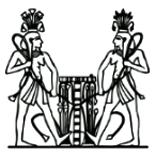The Two Lands
The Egyptian Pharaoh was always referred to as the Lord of the Two Lands. Western academia cavalierly stated that the Two Lands are literally and geographically Upper and Lower Egypt. There is not a single Ancient Egyptian reference to confirm their notion, or even to define a frontier between Upper and Lower Egypt.
Throughout Ancient Egyptian temples, you will find numerous symbolic representations relating to the ceremony of Uniting the Two Lands, where two neteru are shown tying the papyrus and lotus plants. Neither plant is native to any specific area in Egypt. The most common representation shows the twin neteru Hapi (a mirror-image of each other); each as a unisex, with one breast.
The term Two Lands is very familiar to the Baladi Egyptians, who refer to it in their daily lives. It is their strong belief that there are Two Lands—the one we all live on, and another one where our identical twins (of the opposite sex) live. The twins are subject to the same experiences from the date of birth to the date of death.
You and your “Siamese” twin, who “apparently” separate at birth, will re-unite again at the moment of death. The Baladi Egyptian enumerators describe, in their lamentations after the death of a person, how the deceased is being prepared to join his/her counterpart (of the opposite sex) AS IF it is a marriage ceremony. This is reminiscent of the many symbolic illustrations in Ancient Egypt of the tying the knot of the Two Lands. To be married is to tie the knot. [More about this concept is found in Egyptian Cosmology: The Animated Universe, Third Edition by Moustafa Gadalla ]
[An excerpt from Ancient Egyptian: Culture Revealed, Second Edition by Moustafa Gadalla]
https://egyptianwisdomcenter.org/product/ancient-egyptian-culture-revealed-second-edition/
Egyptian Cosmology: The Animated Universe, Third Edition by Moustafa Gadalla
https://egyptianwisdomcenter.org/product/egyptian-cosmology-the-animated-universe-third-edition/


